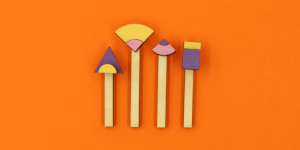~~REVEAL~~
Adobe Illustrator
Redeveloped by Kat Johnston in Aug 2017.
Summary
Adobe Illustrator for beginners
Create and edit vector graphics (like illustrations and logos) in this Illustrator course for beginners.
In this 1.5 hour intro course we’ll start with the fundamentals:
- A demonstration of the basic tools and functionality of Illustrator
- Navigating around the interface
- Setting up your own custom workspace
- Key features and tools: layers, paths and (your new best friend) the pen tool
*Please bring along a USB to save your work
Creating custom designs with Adobe Illustrator
Take your graphic skills to the next level in this intermediate Illustrator course.
Over 4 hours we’ll dissect advanced tools and techniques covering:
- Different ways to customise your artwork/designs
- Tools such as: Blending, envelope distorting, meshing etc
- Creating 3D objects & mapping artwork
- Creative infographics
- Perspective drawing
- Image tracing
Workshop Outline 1
Introduction to Illustrator
- Beginner Adobe Illustrator Users?
- Have you experimented with it before?
- What are you hoping to use it for?
- What are you hoping to get out of today?
Workshop Outline
- Understand vector vs raster
- Document settings
- Become familiar with the interface
- Learn about layers
- Grouping and ungrouping
- Learn pen tool basics and create shapes
- Add and adjust strokes
- Add and adjust colours
- Add basic text
Vector vs Raster
- Vector images are rooted in mathematical theory. Lines and curves known as ‘paths’ are used to make up the design. It can be scaled infinitely. Vectors are great for logos, icons and illustrations.
- Raster images are created using pixels. They do not scale well – if you zoom in, you will see each pixel. It is often used for photographs.
Vector images can be converted to raster if needed for publishing etc.
CMYK vs RGB colour spaces
- CMYK is a subtractive colour model. It refers to the four inks generally used in printing (cyan, magenta, yellow, and black). If your artwork is to be printed, use CMYK.
- RGB is an additive colour model. Red, green and blue light are added together in various ways to reproduce a broad array of colours on screens. If your artwork is to be displayed digitally, use RGB.
Let’s get started!
Open up Adobe Illustrator and create a New Document
That's it for our introduction to Adobe Illustrator!
Workshop Outline 2
Advanced Illustrator
- Intermediate Adobe Illustrator Users?
- How much have you done with Illustrator before?
- What are you hoping to get out of today?
Workshop Outline
- Review the pen tool, shape creation and layers
- Use the rotate tool
- Use the blend tool
- Understand and use pathfinder
- Create clipping masks
- Using live trace to create artwork from an existing drawing or picture
- Use live paint
- Create a finished artwork using these tools
Let’s get started!
Open up Adobe Illustrator and create a New Document
Where to go for more info
https://helpx.adobe.com/illustrator/user-guide.html https://www.lynda.com/ https://design.tutsplus.com/ Google (and Youtube) can be a great help too! Sometimes seeing it in action is more valuable than reading a tutorial.
Materials
- Illustrator 1 Powerpoint - Added to this page for slide show
- Illustrator 2 Powerpoint - Added to this page for slide show


